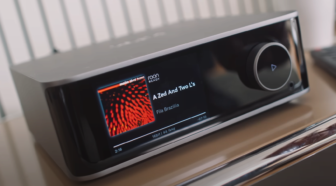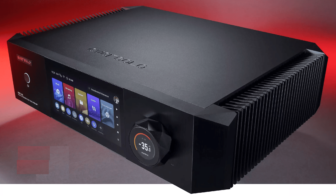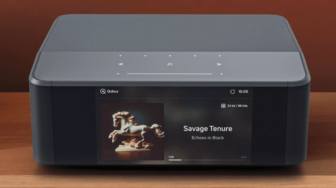Cambridge Audio EXA100 Review
Cambridge Audio has decided to place another series, the EX, between the popular CX and the more expensive flagship Edge series. 7Review is curious.
Cambridge Audio apparently wants to occupy a price point of about $2,200 with a brand-new amplifier, thus closing the fairly large gap between the recently tested CXA81 Mk II and the flagship Edge series.
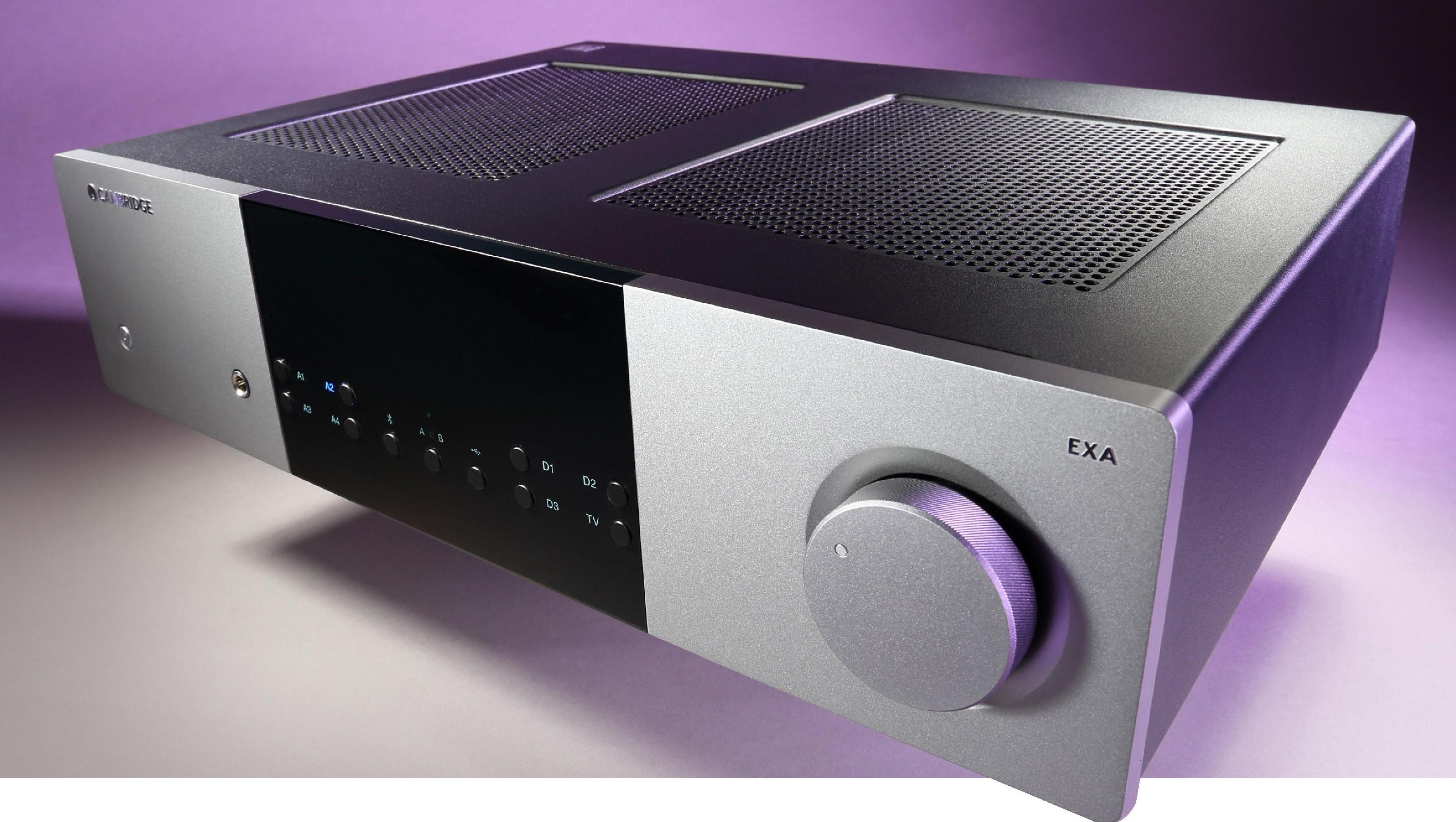
Naturally, the question arises whether to scale down the approximately $5,720 Edge A or to “tune up” the comparatively inexpensive CXA at about $1,320. Apparently, the pragmatic approach is to build upon the base of the popular bestseller, the CXA81 Mk II, which is usually sold at about $1,100 less than the EXA100. In other words, about half the price. Something similar applies to the network player EXN100, which clearly builds on the cheaper CXN100.
Enhanced Concept
If you take a closer look at the similarities and differences out of sheer interest, you’ll quickly notice that the chassis dimensions of both siblings are identical, but the EXA’s weight of just under 13 kilograms is more than four kilograms heavier. Cambridge Audio emphasizes that a technology transfer from the Edge series towards the EX has taken place.
For example, the same output transistors are said to be used. However, with the EXA they have apparently omitted the significantly more complex Class-XA technology with a moving bias point, which leads to even lower crossover distortion. Instead, the EXA uses the simpler but proven Class-AB concept. To be fair, the CXA in its $1,320 class is one of the best-sounding AND best-equipped integrated amplifiers out there. Moreover, its power amp section already features push-pull output transistors sourced from the well-regarded Sanken company. At this price point, it really doesn’t get much better.
What immediately stands out is the completely new “architectural” rearrangement of the heat sinks, which now nestle around the apparently larger toroidal transformer and provide fundamentally different functional distances and shielding situations inside. Greater spacing between potential interference sources inevitably leads to reduced crosstalk and interference. This is likely where a significant portion of the weight gain between the two siblings comes from.
Higher Performance
On the plus side, our measurements show that the larger brother now constantly delivers the output power that the CXA could only achieve with short-term impulses—just under 150 watts. There is an additional reserve of more than 30 extra watts available. At an 8-ohm load, a full 100 watts per channel are offered. The remaining figures are all in the green range and differ only within normal product variance from those of the smaller Cambridge. However, there is one exception: the stereo channel separation in the EXA100 is a full 20 dB better, at an excellent 80 dB. This should have an immediate sonic impact in terms of spaciousness and dimensionality, and as mentioned above, may well be related to the geometrically altered arrangement of the heat sinks.
Modified Design
Visually, the EX series is particularly appealing because the central “display window” now spans the entire height of the fairly substantial front panel. This design matches the EXN100 network player perfectly, which also received a slightly better DAC chip and an HDMI port, and costs about $880 more than the closely related CXN100 without HDMI.
It should be noted that, unlike the attractively and colorfully equipped 100-series network player’s display, the EX amplifier’s “display area” is actually not a display at all. Instead, hidden here, well camouflaged and unobtrusive, are additional switches for input selection or speakers, which were already present in the CXA81 MkII.
Unfortunately, the EXA100 is not available in silver or black as an option, only in gray—so, something in between.
However, it still looks good and, as a solitary offering in production, presumably ensures certain unit volumes and thus more favorable unit costs.
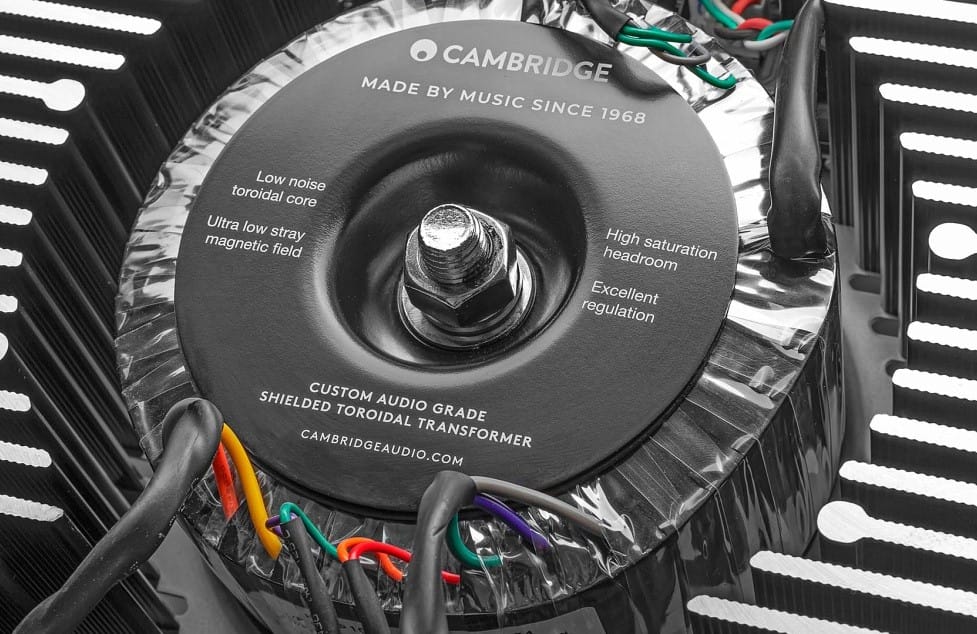
WE LISTENED WITH
JOE JACKSON: NIGHT AND DAY

An intellectual singer with enormous entertainment value.
AL JARREAU: JARREAU

A successful vocal acrobat with very strong feel-good moments.
Proven Digital Section
The digital core of the new integrated amplifier is still built around the superb ES9018K2M DAC chip from ESS Technology. ESS Technology is a California-based company that initially drew attention about four decades ago with speech tools for home computers like the C64 and today, with very few exceptions, provides the undisputed standard DACs for the entire audio industry at a very high level.
According to Cambridge Audio, the roughly 1,000 days—or nearly three years—of development time for the EX series have been used to implement a sophisticated grounding concept in Cambridgeshire.
The device’s ground is of immense importance for a disturbance-free signal. This becomes particularly annoying when a problem arises, resulting in bothersome hum that significantly impairs the enjoyment of music.
Originating from the professional music and event scene, the option of a ground lift is available in devices like the EXA100. With this feature, you can disconnect the protective conductor of the mains line as intended by the manufacturer. Electrically, you change the device’s protection class—without affecting the owner, as the manufacturer has considered this scenario. According to Cambridge, this can also separate the analog and digital sections. If you ever find yourself dealing with a persistent, annoying ground loop hum, the new Cambridge amplifier now provides another solid option for a remedy.
Turning to the rest of the equipment, the EXA100 can indeed score with something we previously missed on the smaller brother: an HDMI port with audio return channel capabilities. Licensing HDMI is cumbersome and expensive for the manufacturer, especially since the HDMI port must remain up-to-date in terms of functionality (e.g. speed, resolution/3D, audio formats) and copy protection standards.
Yet, it is extremely useful and valuable in the modern living room, at least as soon as you want to connect it to the TV and bridge into the AV world to bring the TV sound to your home audio system. The often used optical connection as a substitute is not a fully-fledged replacement, rather a pragmatic stopgap.
Good Connectivity
Apart from HDMI and ground lift, which both fit into previously unused spaces, the new Cambridge’s rear panel is almost a mirror image of the already familiar CXA81 Mk II backside. For your favorite source, you can choose between balanced XLR or unbalanced RCA inputs, plus three more pairs of RCA analog inputs for additional source devices.
The aforementioned DAC from ESS Technology provides its services to external digital devices at the rear, for example, a satellite receiver or even an older CD player, which can thus benefit from the latest converter technology. This is always an excellent way to keep up with technical progress. After all, we can combine the good old and solid metal-cast drives with today’s far better converters: the best of both worlds, so to speak, but that’s just a side note.

Smartphones or tablets can connect wirelessly via Bluetooth, and the tracks from the music library can be processed further with high-quality aptX sound. Both Cambridge integrated amplifiers can drive two switchable pairs of speakers or enable bi-wiring, can of course be controlled remotely via the included system remote, and offer convenience options like trigger remote activation, and so forth.
Subwoofers and headphones can also be connected, and thanks to the British preference for pre-outs, it’s possible to connect active speakers or even another power amplifier later if you, as an audiophile, develop ambitions towards bi-amping in the future. This path is only open with integrated amps that have preamp outputs.
How Does It Sound?
The sonic qualities of the Cambridge CXA81 Mk II were already anything but “shabby,” and the “parents” have clearly stepped it up with the new 100. Of course, the sound is related, familiar, and almost family-like.
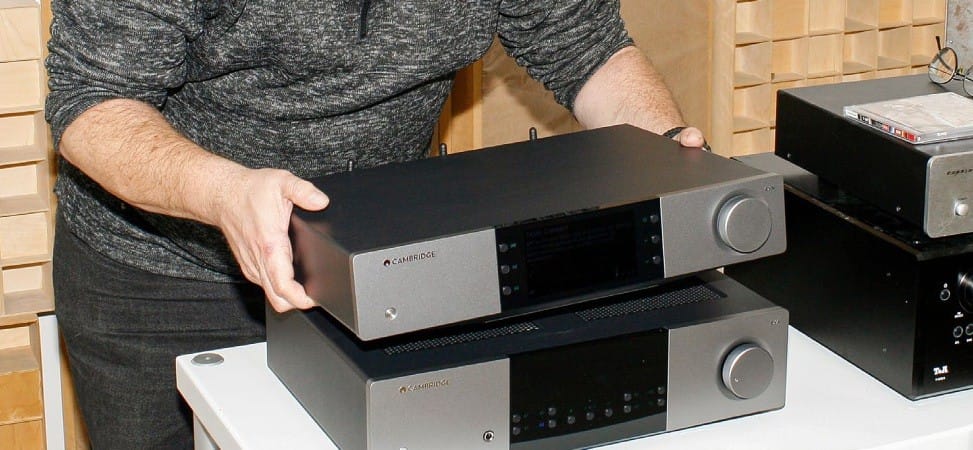
The “new one” just sounds more relaxed, larger, and a bit punchier, while also a tad more refined in the details than the smaller brother. It may also handle more demanding loudspeakers a touch better. It plays tighter in the bass and gives the singer—in our case Joe Jackson with his “Slow Song”—even more breathing room, providing a bit more pressure in the kettle. It’s not a huge difference, but the sum of all these attributes is quite noticeable.
Still, this may not be a reason for CXA81 Mk II owners to upgrade now. After all, at around $2,200, the EXA enters a class where it must also compete with entirely different calibers and be measured against them.
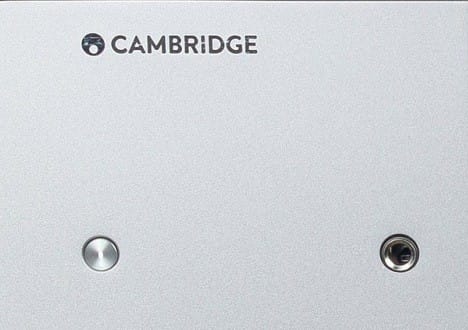
With extended features, slightly more power, and a slightly better sound, the new Cambridge Audio amp is indeed the better overall package than the CXA81 Mk II. The difference between the amplifiers is actually greater than between the related network players CXN100 and EXN100.

If you’re currently making a purchasing decision in the integrated amplifier range, you should take this into account. At about $2,420, the value for money is still really good for the EXA100, but not quite as extraordinarily high as with the CXA81 Mk II for about $1,320. That remains a real bargain. Relatively speaking, there are also about $1,100 reasons that could tip the scales in favor of the smaller Cambridge if your budget is limited.
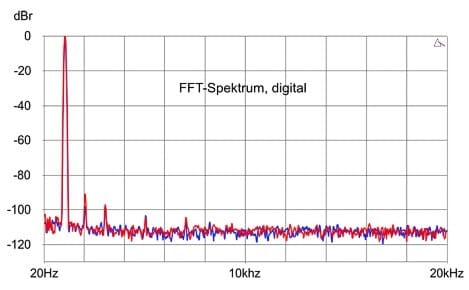
But let’s not be unfair, because both of Cambridge Audio’s integrated amplifiers are excellent musically and very well equipped. You can’t really go wrong with either one.
TEST DEVICES
CD player: Audiolab 8300CDQ
Streamer: Cambridge Audio EXN100
Integrated amps: Advance Paris A12 Classic, Cambridge Audio CXA81 Mk II, Denon PMA-3000NE
Loudspeakers: Martin Logan Motion 60XTi
Cambridge Audio EXA100 Tech Specifications
Product / Price Class: Integrated Amplifier (Transistor) / $2,200 to $5,000
Website: www.cambridgeaudio.com
Dimensions (W x H x D in cm): 43 x 11.5 x 34
Weight (in kg): 12.8
Distributor (Germany): Cambridge Audio
Contact Number: +49 4101 809 9810
Verdict
Sound Quality: 55%
- Rating: Good (8.0/10)
- Description: Powerful, spacious, colorful, and vibrant
Measurements (15%)
- Continuous Power per Channel at 4 Ohms (at 1% THD, in Watts): Good (148) -> 8.0/10
- Impulse Power at 4 Ohms (1 kHz, in Watts): Good (183) -> 8.0/10
- Intermodulation Distortion at 5 Watts (in %): Very Good (0.001%) -> 9.5/10
- Damping Factor at 4 Ohms: Good (49) -> 8.0/10
- Channel Separation (in dB): Good (80) -> 8.0/10
- Channel Balance Adjustment (in dB): Satisfactory (0.9) -> 7.0/10
- Upper Frequency Limit (in kHz): Good (76) -> 8.0/10
- Distortion at 5 Watts (in %): Very Good (0.0035%) -> 9.5/10
- Noise Level at 5 Watts (in dB): Good (-93) -> 8.5/10
- FFT Spectrum: Good to Very Good -> 8.0 to 9.0/10
- Idle Power Consumption (in Watts): Good (56) -> 8.0/10
Features (15%)
- Build Quality: Good -> 8.0/10
- Number of Analog Inputs (RCA / XLR): Very Good (5) -> 9.0/10
- Special Interfaces / Pre-Out: DAC, HDMI, Bluetooth, Headphones, Subwoofer -> Yes
- Room Correction or Room Measurement: No
- Color Variants / Finishes: Gray (1) -> Limited
- Hard Power Switch / Expandable Features: No / No
Usability & Operation (15%)
- Remote Control Quality / Manual: Good / Good
- On-Device Operation / Display: Good / Satisfactory
- Warranty (in Years): 2
FIRST LOOK: Cambridge Audio EXA100 Stereo Integrated Amplifier !
FIRST LOOK: Cambridge Audio EXA100 Stereo Integrated Amplifier ! Taking over 3 years to develop and more than 1000 ...



